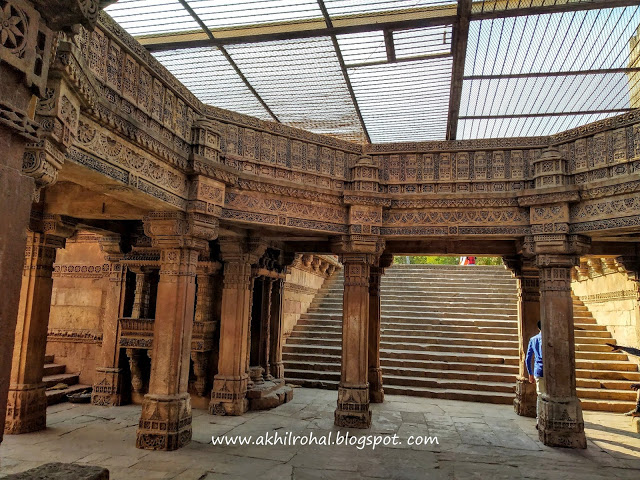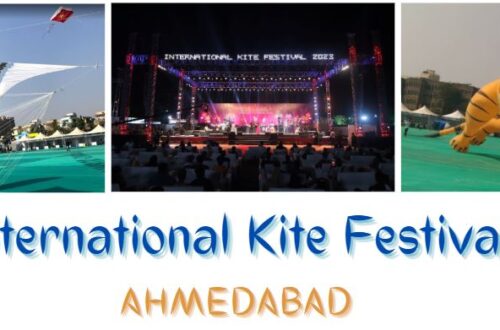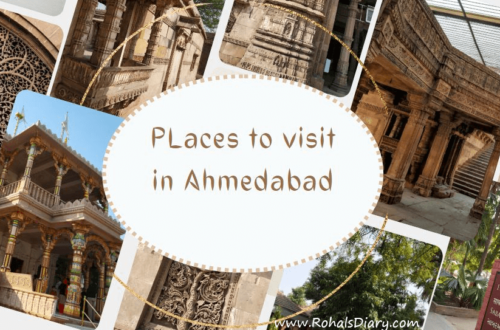
Adalaj Ni Vav – A stepwell in Ahmedabad
Last week I was on a visit to Ahmedabad primarily for the international kite festival. In addition to it, I visited all the famous tourist places in and around Ahmadabad. Adalaj stepwell (Adalaj ni vav) is one of famous tourist places in Ahmedabad. Adalaj stepwell is more than 500 years old structure, located at a distance of around 15 Kms from the heritage city of Ahmedabad.
I was awestruck after seeing the architectural beauty. The beauty of Adalaj stepwell attracts many photographers for pre wedding shoot. After learning about the history of Adalaj stepwell and admiring its beauty, I decided to write down a post about it. I also found out that The Adalaj water festival is also conducted every year, which is conducted in the evening hours where you can listen to live classical Indian music and also can see the stepwell lit-up in colorful lights.
Step wells in Gujarat
Step wells are quite common in east India. People relied on these wells for clean water, as this region of India is quite arid. Initially, I wondered why they used to build such massive structures just to get water, why not just dig a hole in the ground. After reading more, I found out that the step wells were not only the place of getting water, but it also provided space for people to congregate back then. Moreover, the colossal Step wells were seen as pride and provided the kings a chance to show off a bit.
 |
| Adalaj Stepwell |
Adalaj Stepwell – An architectural beauty
A stepwell is called “vav” in Gujarati, hence the name Adalaj ni vav. The Adalaj Stepwell is a five-story structure, made up of sandstone. As we climb down to its first floor, it welcomes us with a beautiful porch, which is octagonal in shape and beautiful intricate carvings can be seen on the walls, pillars, and beams. It becomes more beautiful as we climb down to the main water well located on the 5th floor underground and as we climb down the stairs, we can also feel the drop in temperature, how relieving it would have been 500 years ago when then there was no AC, cooler or fans. I couldn’t see the main well, as the entrance to the main well is closed, but the View up from the base of the stepwell is astonishing.
 |
| Entrance to Adalaj Stepwell |
 |
| Adalaj Stepwell |
Adalaj ni vav history
According to the tour guide, it was built in the 15th century by a queen called Rudadevi in memory of her king Rana veer Singh, who was killed by Mahmud Badaga. After Rana veer Singh was killed in a war by Mahmud Bedaga, he forced the queen to marry him. The queen Set up a condition. The condition was that She’ll marry him if he completes the construction of this Step Well, which was initiated by her late husband Rana Veer Singh to solve the water problem in the region. Mahmud Bedaga accepted it and as soon as the construction was completed, the queen did suicide by jumping into the well. It’s also believed that Mahmud Bedaga also killed the masons, as he wanted to prevent them from building anything as beautiful as this.
 |
|||
| Carvings on the pillars – Adalaj Stepwell |
How to reach Adalaj stepwell.
The Adalaj Stepwell is about 18 Kms from the old Ahmadabad city. We can reach there by bus, but the frequency of the buses is quite less. the best is to hop on to a shared taxi, which will cost you around ₹40. The shared taxi can be found from the Subhash Circle. Google Maps Link for the same is Here. Alternatively, you can book an Ola or Uber, which will cost around ₹500.




2 Comments
Ankit Chow
Thank you for the information. Indeed its a wonderful place to visit.
Anil
The Islamic architectural style could be attributed to the Muslim king Begda who built it. The walls are carved with women performing daily chores such as churning of buttermilk, adorning themselves, scenes of performance of dancers and musicians, and the King overlooking all these activities. Intricate carving in the well structure An interesting depiction carved from a single block of stone is of the Ami Khumbor symbolic pot of the water of life and the Kalp Vriksha a tree of life.